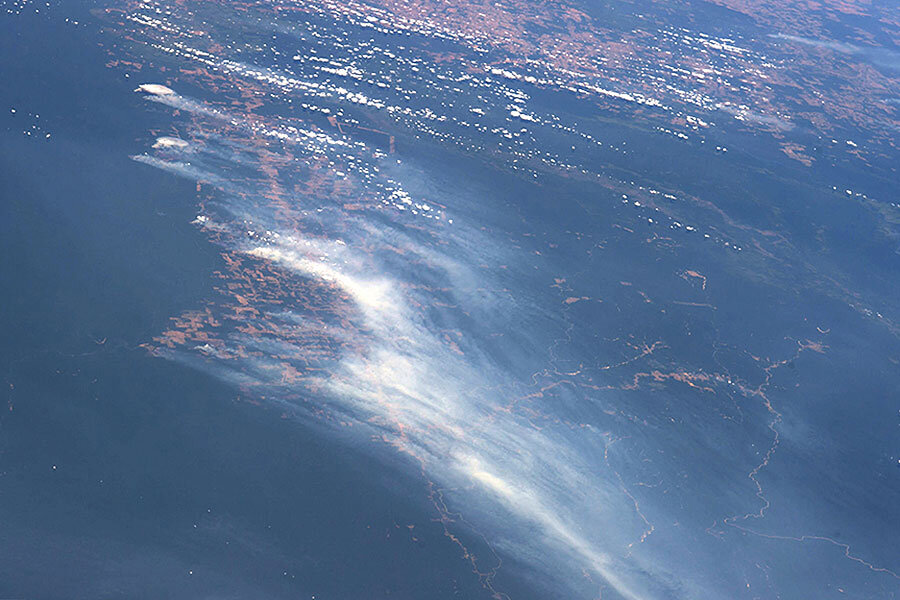This El Niño season could spark intense wildfires in Amazon
Loading...
El Niño, a natural phenomenon blamed for wild weather fluctuations all over the Pacific Rim, is thought to have set the scene for one of the most destructive fire seasons in the Amazon’s recent memory.
Though the El Niño conditions of 2015 and early 2016 have now largely dissipated, they have already left a legacy: In the Amazon basin, the reduction of rainfall caused by this event has left the region drier than at the start of any dry season since 2002.
While the risks are real, the news is not all bad: As prediction tools improve, the ability of organizations, both national and international, to work together and mitigate the impacts of wildfires improve. And the enhanced awareness can be extended to other regions besides the Amazon.
"Fire forecasts three to six months before peak fire activity are important to identify areas with higher fire probability for integrated planning in support of local actions," said Liana Anderson, a biologist from Brazil's National Center for Monitoring and Early Warning of Natural Disasters (CEMADEN), in a press release.
Forecasting dry season fire activity in the Amazon is a recent undertaking, developed in 2011 in a joint effort by University of California, Irvine, and NASA’s Goddard Space Flight Center. It considers the relationship between climate and active fire detections from NASA satellites, of particular interest being the link between fire activity and sea surface temperatures.
In essence, warmer ocean temperatures in the tropical Pacific and Atlantic oceans tend to drive rainfall away from the Amazon area, boosting the risk of fire during the dry months.
Groundwater is also an important measurement that contributes to these predictions. In analyzing this variable, an integral tool is the joint NASA/German Aerospace Center's Gravity Recovery and Climate Experiment (GRACE) mission, which follows changes in terrestrial water storage and provides a proxy for soil and forest dryness.
"When trees have less moisture to draw upon at the beginning of the dry season, they become more vulnerable to fire, and evaporate less water into the atmosphere," explained UC-Irvine scientist James Randerson, who was involved in building the forecast model. "This puts millions of trees under stress and lowers humidity across the region, allowing fires to grow bigger than they normally would."
Alongside the predictive tools, the team has also developed a web-based tracking ability, allowing nearly real-time monitoring of Amazon fires, with estimated fire emissions from each forecast region being updated daily.
The importance of better predicting Amazon fire activity, and thus taking steps to manage it, is hard to overstate, with the burning bush having such wide-ranging consequences. Even slow-moving fires can have severe impact, as Amazon rainforest trees are not adapted to cope with, or benefit from, fire. The massive smoke plumes that build up can degrade regional air quality, even drifting over major population centers such as São Paulo and Rio de Janeiro in Brazil.
The team is hopeful that their work to forecast and increase awareness of fire risk can spread beyond the Amazon. As Dr. Randerson says, the tools may well be applicable for much of Central America, as well as a multitude of countries in Southeast Asia.








